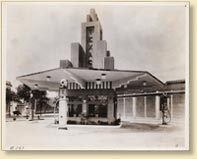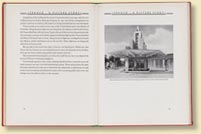The Request: Genesis of the Collection
The guiding purpose . . . of the collection of industrial photographs is the foundation for a better understanding of industrial relations.Donald Davenport,
Professor of Statistics, Harvard Business School, 1932
 Donald Davenport, a professor of statistics, expressed a growing concern among Harvard Business School professors in the 1930s. “I have felt for some time,” he wrote, “that most of our students had a very vague and unrealistic conception of manpower in industry.” To that end, Davenport and Frank Ayres, Executive Secretary of the Business Historical Society, wrote to leading companies requesting photographs that illustrated what Davenport called “the human factor,” the interaction of worker and machine. The images were to be used for exhibitions and classroom instruction at Harvard Business School.
Donald Davenport, a professor of statistics, expressed a growing concern among Harvard Business School professors in the 1930s. “I have felt for some time,” he wrote, “that most of our students had a very vague and unrealistic conception of manpower in industry.” To that end, Davenport and Frank Ayres, Executive Secretary of the Business Historical Society, wrote to leading companies requesting photographs that illustrated what Davenport called “the human factor,” the interaction of worker and machine. The images were to be used for exhibitions and classroom instruction at Harvard Business School.
 Ayres and Davenport corresponded with the gamut of American companies, ranging from General Electric to International Harvester. Eager to demonstrate the effectiveness and efficiency of their industrial operations, and no doubt wanting to secure a presence at Harvard Business School beside their competitors, corporations provided photographic prints, many of which had appeared in corporate reports, advertisements, and exhibits featured at the 1933 Century of Progress International Exposition in Chicago. The new venue at Harvard Business School afforded businesses a chance to appeal to an audience that represented an upcoming generation of corporate administrators—some, potentially, the future managers of their companies.
Ayres and Davenport corresponded with the gamut of American companies, ranging from General Electric to International Harvester. Eager to demonstrate the effectiveness and efficiency of their industrial operations, and no doubt wanting to secure a presence at Harvard Business School beside their competitors, corporations provided photographic prints, many of which had appeared in corporate reports, advertisements, and exhibits featured at the 1933 Century of Progress International Exposition in Chicago. The new venue at Harvard Business School afforded businesses a chance to appeal to an audience that represented an upcoming generation of corporate administrators—some, potentially, the future managers of their companies.
- Baker Library | Historical Collections | Site Credits | Digital Accessibility
- Contact Email: histcollref@hbs.edu
